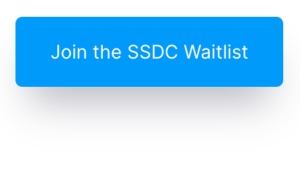Dryland periodization is critical for fast swimming. But it can sometimes feel overwhelming or confusing on how you go about that process.
Do you have a season-long plan for your swimmers in the pool? What about out of the pool? The reality is that most swim programs have a comprehensive season plan for swim workouts but miss out on the benefits of having a season-long dryland program. Dryland plans should not consist of random workouts.
You know the workouts that feel like drawing at random from a deck of cards. Draw a suit, perform an exercise. Draw a number, do that many reps. Effective dryland programs are not chosen at random like a card deck game. They are packed with science. Every exercise, session, and parameter of the dryland plan is in place for a reason. One of our core SURGE Strength principles is the periodization of dryland workouts needs to match a team’s or individual swimmer’s needs. This is successfully done by using the “Big 3” phases of periodization. Done right, your team will peak at championships. So, let’s find out how to make it happen:
What is Dryland Periodization?
Periodization is the orderly planning of each microcycle, mesocycle, and macrocycle in a dryland program. It ensures that key training principles are cycled throughout the year in a way that promotes peak performance at championship meets. Periodization keeps coaches organized and on-target for meeting their short- and long-term goals. First, we need to learn the vocabulary used when we discuss periodization. Here are how different time periods are measured in cycles:
- Microcycle: individual (daily) dryland session
- Mesocycle: a block or phase of dryland sessions
- Macrocycle: an annual or season dryland program
Types of Dryland Periodization
Next, here are 3 types of dryland periodization models to implement when working with swimmers. Something to keep in mind as we learn about the basics of periodization is that there are many more ways to periodize a dryland plan than just these three. But these are what we recommend to swim coaches:
1) Linear Dryland Periodization
Linear periodization starts with higher volume and lower intensity workouts, then switches to lower volume and higher intensity as the season progresses. It is great for beginners and youth athletes. Two weeks before a championship, a taper is implemented. Another way to look at linear periodization is to put strength and hypertrophy at the beginning of a season or in the offseason. Then, gradually swap out strength sets for power development. The purpose of linear periodization is to gradually increase intensity over the season in order to “peak” at championships.

Courtesy: Colbi Bruce / thefitnesstraineracademy.org
2) Undulating Dryland Periodization
Undulating periodization involves constantly rotating through training variables on a daily or weekly basis. Instead of gradually increasing intensity and decreasing volume over a course of mesocycles, undulate or rotate through these variables within the mesocycle. This style of periodization is best used for advanced athletes. It also works well when swimmers need to consistently perform at their peak. An example is a swimmer who performs well at the end of season championships and qualifies for a bigger meet.

Courtesy: Brian Gwaltney / otpbooks.com
3) Block Dryland Periodization
The block periodization method breaks down dryland into distinct training blocks or phases. Each phase, or mesocycle, focuses on a different training variable (i.e. strength, power, endurance, etc.). Keep in mind that multiple variables are being addressed during block periodization, but only one will be highlighted. Block periodization works well around dual meets and holidays during the in-season. Many club teams and even collegiate programs use a variation of this type of programming.

Courtesy: Richie Hedderman / hurricanefitnessireland.com
The optimal way to periodize your dryland plan depends on a multitude of factors. These include your team’s training age, meet schedule, and swim program set-up, as well as the time and space you have for dryland. Want this professionally done for you? Get started with a customized dryland program for yourself or your team with one of our Dryland Certified Coaches.
How To “Peak” at Championships
In our SURGE Strength Programs, we use all 3 of these periodization models when appropriate as our coaches individualize programs for teams. Inside of the SURGE Strength Dryland Certification, we teach concepts from each periodization structure. This way, coaches learn our hybrid periodization model designed specifically with swim seasons in mind. We take the approach of linear periodization by gradually increasing intensity over the course of a training year while gradually decreasing volume.
We surge through key workout variables (Learn More – 8 Workout Variables Every Dryland Program for Swimmers Needs) in each session. This primes the swimmers to perform well in dual meets. It also keeps them, well-rounded athletes. SURGE Strength Programs incorporate training blocks for each mesocycle as the season unfolds. To keep it simple, we stick to the “Big 3” training phases:
Strength
A strength phase includes a spectrum that ranges from bodyweight exercises up to heavy resistance training movements. Athletes perform about 6 reps of any given movement. However, the program’s volume and intensity rely heavily on the team’s training history. The main goal of a strength phase is to generate tension and increase exercise tolerance.
Strength-Power
Strength-power phases activate muscles by performing high-level strength movements. Then, immediately pairing them with speed and power movements. Supersetting these movements together develops power and athleticism while maintaining strength.
Power
Power phases focus on producing the strength required for an exercise at the fastest speed possible. These phases are best trained when athletes are fresh. They require a large amount of energy and cannot be trained under fatigue.
To learn more about these 3 phases watch the video below from the SURGE Strength Dryland Certification:
By using the principles of periodization, coaches can be informed about their dryland plan. In turn, much of the stress they feel at the end of the season is lifted, and they feel confident that they’ve taken the optimal approach to dryland all year. Imagine how much faster swimmers could be if coaches were as intentional all year with dryland as they are with taper. Knowing the science behind dryland training sets up coaches to make the best dryland decisions for their team.
ENROLL IN A DRYLAND 101 COURSE FOR FREE
MORE DRYLAND RESOURCES FROM SURGE STRENGTH:
GET STARTED WITH A DRYLAND PROGRAM
LEARN ABOUT BECOMING SSDC

SURGE Strength’s Mission:
BUILD BETTER ATHLETES
GENERATE FASTER SWIMMERS
Courtesy of SwimSwam’s exclusive dryland training partner, SURGE Strength.
SURGE Strength, a strength training brand created by Chris Ritter, CEO of RITTER Sports Performance, aims to build better athletes and faster swimmers through dryland programs and educational courses.
Get started with a SURGE Strength Dryland Program or enroll in a dryland course in the SURGE Strength Academy today!










